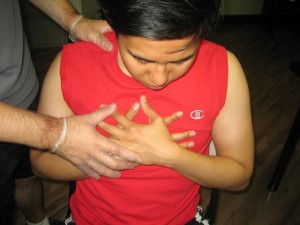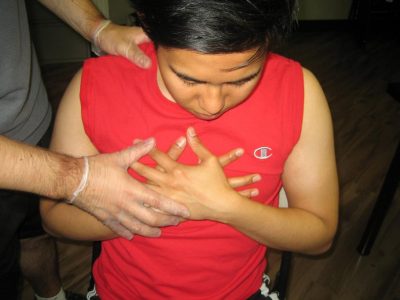An unstable angina is described as chest pain that arises abruptly and worsens over time. It can occur even while at rest or even while asleep. An episode can lead to a heart attack. Due to this, an episode of unstable angina is considered as an emergency and necessitates immediate medical attention.
https://www.youtube.com/watch?v=zD9aXZY0pdY
This type of angina indicates that the arteries are narrowed and the individual might suffer a heart attack. If not treated, it can progress to a heart attack, heart failure or arrhythmias.
What are the causes?

Coronary heart disease that develops due to the build-up of plaque on the arterial walls is the main cause of unstable angina. The plaque causes the narrowing and rigidity of the arteries.
As a result, the blood flow to the heart muscle is limited. If there is not enough blood and oxygen, chest pain is felt.
Risk factors
- Obesity
- Diabetes
- High blood pressure
- Family history of heart disease
- Being male
- Sedentary lifestyle
- Elevated low-density lipoprotein (LDL) cholesterol
- Using tobacco products
- Low high-density lipoprotein (HDL) cholesterol
Indications of unstable angina
The characteristic indication of angina is chest pain or discomfort but it can vary depending on the individual. It is important to note that unstable angina oftentimes triggers sensations that feels striking the same as a heart attack.
The usual indications include:
- Nausea
- Crushing or sharp chest pain
- Anxiety
- Pain that radiates to the back or extremities
- Sweating
- Dizziness
- Shortness of breath
- Unexplained fatigue
Management
The treatment for unstable angina is based on the severity of the condition. One of the initial treatments recommended is a blood thinner such as clopidogrel or heparin. If the blood is not too thick, it can freely flow via the arteries.
The doctor might utilize other medications to minimize the symptoms of angina such as those that lower the:
- Cholesterol
- Blood pressure
- Anxiety
- Arrhythmias
In case there is blockage or significant narrowing in an artery, the doctor might recommend more invasive measures such as angioplasty. The doctor might also insert a stent to keep the affected artery open.
For severe cases, a heart bypass surgery is required which reroutes the flow of blood away from the obstructed artery to improve the blood flow to the heart.
On a long-term, there is a need to take the appropriate actions to change the lifestyle regardless of the severity of the condition. These include a healthy diet, reducing the stress levels, regular exercise, cutting down weight and cessation of smoking.
More Information / Disclaimer
The information posted on this page on an unstable angina is for learning purposes only. Learn to recognize and manage circulatory issues by taking a standard first aid course with Red Deer First Aid.

